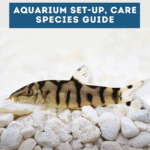The Yoyo loach is one of few diurnal loaches that makes an exciting addition to a community tank. These attractive bottom-dwelling fish can be kept in groups with other peaceful fish and are relatively easy to care for, making them a good choice for beginners.
But what do Yoyo loaches eat? What’s a typical Yoyo loach lifespan? And what size do Yoyo loaches reach in captivity?
Read this guide to learn how to care for these flashy, peaceful fish!
What Is A Yoyo Loach?
Yoyo loaches are cool-looking bottom-dwelling fish that can make a nice addition to a community fish tank.
Here’s an overview of the Yoyo loach at a glance!
Scientific Name
Botia almorhae
Common Name (species)
Yoyo loach, Almora loach
Family
Characidae
Origin
Northern India, Bangladesh
Diet
Omnivore
Care Level
Intermediate
Activity
Lively scavenger
Lifespan
5 to 8 years
Temperament
Generally peaceful
Tank Level
Primarily a bottom-dweller
Minimum Tank Size
20 gallons
Temperature Range
Tropical 75° to 86° F
Water Hardness
Up to 12 dGH
pH Range
6.5 to 7.5
Filtration/Flow Rate
Moderate
Water type
Freshwater
Breeding
Egg layer
Compatibility
Suitable for a peaceful community tank with mid to upper-water column dwellers
OK, for Planted Tanks?
Yes
History Of Yoyo Loaches
Yoyo loaches are found across the Middle East and Asia, and there are several closely related, similar species in the same family.
Two types of Yoyo loaches are offered for sale in the trade, although there could be more.
The main species, Botia almorhae, is also commonly called the Almora loach and is only found in Nepal and northern India. The Pakistani loach, Botia lohachata, has darker markings, grows slightly larger, and has a different range.
Almora loaches are native to the Ganges basin, with juveniles generally living in the lower parts of the water system and adults in the higher streams, where it’s believed they migrate to spawn.
Natural Habitat
Yoyo loaches live in clean mountain streams and slow-moving rivers, typically gathering in rocky pools where the water is quieter and there’s plenty of shelter among the crevices and rocks.
The fish are omnivores that feed on tiny crustaceans, invertebrates, insects, snails, insect larvae, some plant matter, and general detritus.
Physical Characteristics
Botia loaches are classed as scaleless fish, having only tiny scales that give them color but leave the fish highly sensitive to poor water quality and toxins.
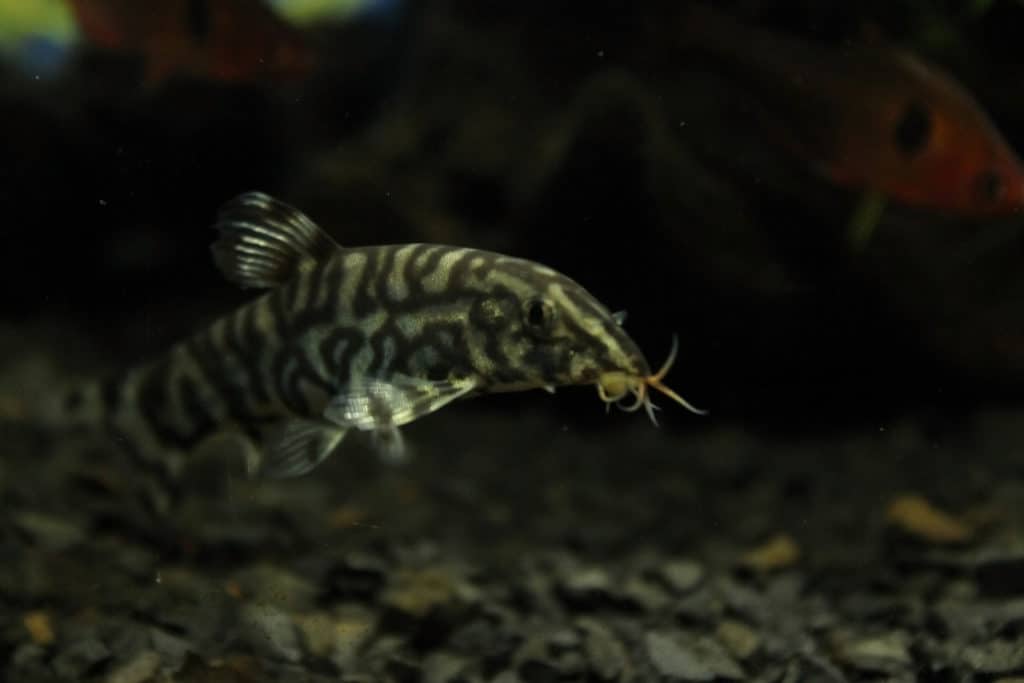
Yoyo loaches are silver with iridescent yellow, gold, or blue accents. Their markings can be bands or spots, ranging from dark brown to black, changing as the fish mature. Often the markings appear as horizontal lines, covering the fish in a net-like, reticulated pattern.
In juveniles, the random patternation along the fish’s sides sometimes seems to spell the word “yoyo,” hence the species’ common name.
These loaches have cone-shaped faces and long, slim bodies. Four pairs of barbels surround their snout, and they have tiny suborbital spines under their eyes that are used for defense. Take care not to get those spines caught in your fish net when catching your loaches!
Size
Yoyo loaches can grow to 3 to 6 inches long, although the juveniles sold in fish stores are around 2 inches long.
Average Lifespan
In my experience, Yoyo loaches typically live for 5 to 8 years in captivity when given the proper care, although some hobbyists report keeping their fish for up to 15 years!
Activity Level and Behavior
There’s never a dull moment in a fish tank with Yoyo loaches!
Healthy fish are active during the day rather than being nocturnal like many loach species, so you can watch them scavenging around the aquarium.
Compatibility and Tankmates
Tank Mates
Yoyo loaches can live in a peaceful community setting, although we recommend keeping larger-sized tank mates that gravitate to the central to upper areas of the water column.
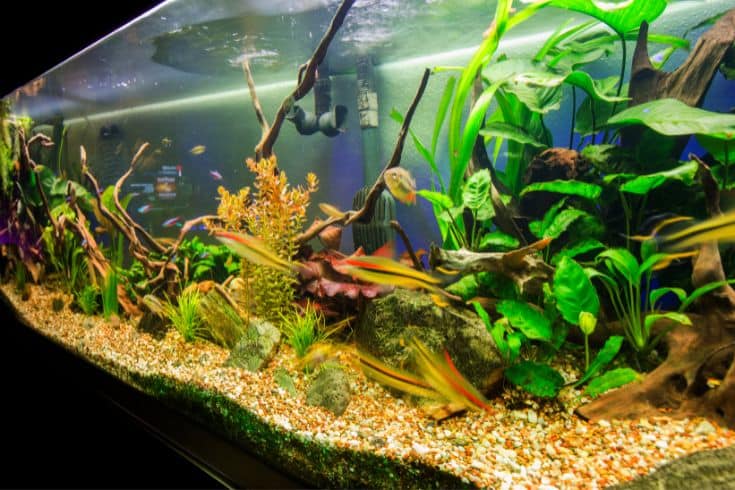
Suitable tank mates for Yoyo loaches, in our experience, are schooling tetra species, Mollies, and Platys. Some hobbyists report that their Yoyo loaches can nip at long-finned fish, so Angelfish and bettas might not be a good choice.
As mentioned earlier, Yoyos will eat small snails and other invertebrates, so you can’t keep snails or shrimp with them. In addition, avoid aggressive or semi-aggressive fish such as freshwater sharks, cichlids, and Tiger barbs.
Can Yoyo Loaches Live Together?
Yoyo loaches tend to form hierarchical groups, and I’ve experienced problems when keeping just a couple of these fish. Generally, experienced hobbyists prefer to keep groups of five or more of these loaches as that can prevent bullying and keep the fish happy.
In addition, I would never keep one of these fish alone. I began by keeping just one Yoyo, and he spent most of his time hiding away, only venturing out when I added a few more of his cousins to my tank.
Diet and Feeding Habits
Yoyo loaches are omnivores, although they tend to eat a mostly carnivore diet.
In the wild, the loaches are scavengers, eating pretty much whatever they find in their immediate habitat, including dead fish, algae, and general detritus.
In captivity, you can offer them catfish or bottom feeder pellets, algae wafers, and frozen meaty foods, such as brine shrimp, mosquito larvae, and similar. The loaches also appreciate the addition of a few fresh blanched veggies to their diet, including zucchini and cucumber.
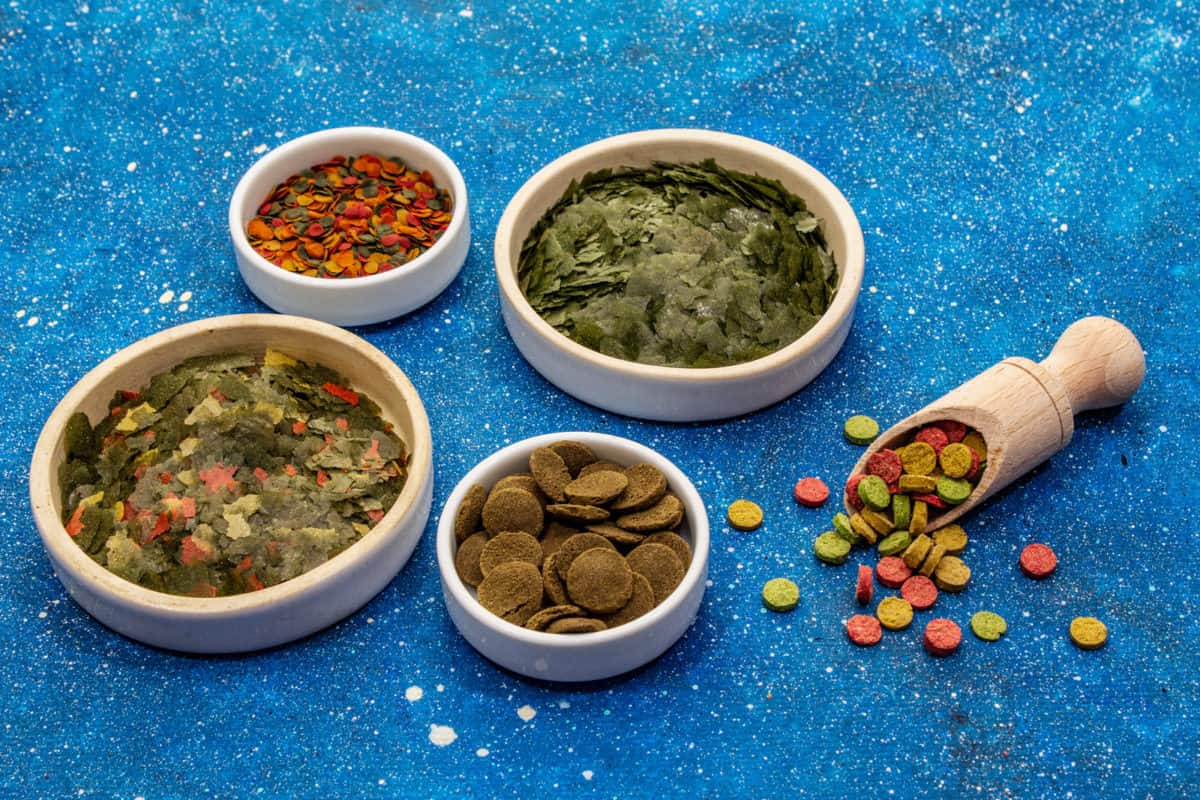
How Much and How Often Should You Feed Yoyo Loaches
I recommend feeding your Yoyo loaches twice every day, once in the morning and again in the evening, offering them only what they will eat in a few minutes.
Care Requirements
Yoyo loaches are widely considered challenging to care for, largely due to their sensitivity to water quality and general living conditions. For that reason, we don’t recommend Yoyos to beginners until you have more experience; then, you’re good to go!
Yoyo loaches are best introduced to a clean, well-maintained mature tank rather than a brand-new setup.
Tank Size
A young loach can do fine in a 20-gallon aquarium, but you’ll need to upsize that size to at least 40 gallons for a single adult Yoyo and 110 gallons for a group of five individuals.
Although these are primarily bottom-dwellers, they are powerful swimmers and capable jumpers, so you must choose a tank with a cover slide or lid.
Tank Setup
Substrate
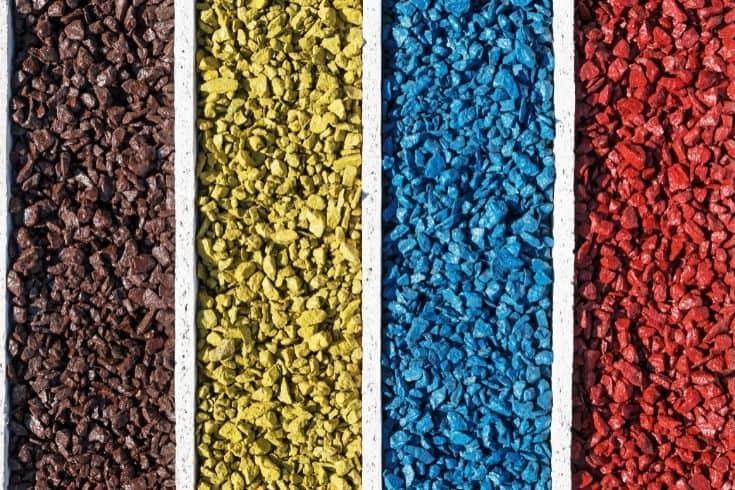
In the wild environment, Yoyo loaches inhabit water bodies with rocky substrates that you can recreate by using a mix of aquarium gravel, pebbles, and rocks. Be mindful that the fish’s sensitive barbels that they use when foraging for food could be damaged by coarse or sharp gravel, so choose a fine-gauge substrate.
Decoration
Yoyo loaches don’t appreciate bright lighting in their environment, so choose floating aquatic plants to diffuse the light and go for low-light plants.
When it comes to decoration, you can keep it natural by using driftwood, twisted roots, rocks, pebbles, caves, and the like. These are active fish, so don’t overcrowd the tank and leave plenty of swimming space.
Habitat Requirements
Yoyo loaches need stable water conditions to remain happy and healthy. So, you must be prepared to stay on top of tank maintenance and keep the tank clean. In addition, these fish do best when added to a mature aquarium.
Filtration
Yoyo loaches have tiny scales and are extremely sensitive to ammonia and other toxins, so they need pristine water.
The fish come from an environment with slow-moving waters, so the water flow should be moderate around the tank bottom, although you might see some fish enjoying the water movement by the filter outflow pipe.
We recommend using a baffled HOB or canister filter, although an undergravel filter system might be suitable for a lightly stocked, mature planted tank.
You can use air stones and bubblers to increase the diffused oxygen in the water and provide the fish with fun places to swim and bounce up and down the water column like a yoyo!
Ideal Water Parameters
Yoyo loaches need stable water temperatures of between 75 and 86°F, so you’ll need a reliable aquarium heater.
The fish prefer slightly soft, acidic water, with a pH level of 6.5 to 7.5 and a general hardness of 3 to 10 dGH.
Tank Maintenance
As I mentioned earlier, Yoyo loaches need exceptionally good water quality to thrive. If you don’t keep on top of tank maintenance, the fish will become stressed, which could lead to disease outbreaks and a shorter lifespan.
- Once a week, use an aquarium vacuum to remove fish waste, decaying plant matter, and leftover food from the substrate and around plant bases.
- Change around 20% of the water to keep the environment clean and fresh for your loaches.
- I like to rinse the filter media in old tank water once a fortnight to remove debris and keep the water flowing freely over the media. Periodically, you’ll need to change the filter media in line with the manufacturer’s guidelines.
- Use an algae magnet to keep the viewing panes clear.
Since these fish are so sensitive to water conditions, I recommend testing the aquarium water regularly to ensure that your tank is free from pollutants like ammonia and nitrite and that nitrate levels are 20 ppm or less.
Health and Disease

Since Yoyo loaches are almost scaleless fish, they are extremely susceptible to water-borne bacteria, toxins, and many fish medications. That means the loaches are usually the first to succumb to diseases such as Ich, fungal, viral, and bacterial infections.
Signs of Good Health
These lively, uniquely patterned fish are constantly darting around the tank, scavenging around the substrate for scraps.
Red Flags
The following signs indicate that your Yoyos are not thriving, and a disease outbreak could be imminent.
- Poor appetite
- Not swimming with tank mates
- Lack of activity
- Reddened skin patches, sores, ulcers
- Flicking against solid objects in the tank, the glass, or the substrate
Common Health Issues and Treatment
Health Issue
Ich (White Spot Disease)
Symptoms or Causes
Ich is a very common disease that’s caused by an aquatic protozoan parasite.
Fish infected with Ich develop a sprinkling of tiny white spots on their fins, gill covers, and bodies. They also flash against the gravel and other solid objects in the aquarium.
Suggested Action
Raise the water temperature to 82o F for three days. Use an OTC White Spot Disease medication to treat the tank.
Health Issue
Flukes
Symptoms or Causes
Flukes is the term used to describe various types of external fish parasites. These macroparasites can often be seen with the naked eye attached to the fish’s skin or gills.
Suggested Action
Treat the fish tank with an OTC antiparasitic medication.
Health Issue
Fungal infections
Symptoms or Causes
White fluffy growths on the fish’s body, mouth, and head.
Suggested Action
Quarantine infected fish, and treat with an antifungal medication.
Health Issue
Bacterial infections
Symptoms or Causes
Sores and ulcers on the body and head, ragged, bloody fins.
Suggested Action
Treat the tank with OTC antibacterial treatment.
Breeding Yoyo Loaches
Unfortunately, not much is known about breeding Yoyos in captivity, although it is notoriously difficult without the use of artificial hormones.
It’s likely that migration plays a pivotal role in the breeding behavior of wild Yoyos, but that’s virtually impossible to recreate in the home fish tank.
Availability
Yoyo loaches can be found in most good fish stores and online for upward of around $5, depending on the size of the fish and the quality of its markings.
FAQs
Here are the answers to some of your questions about Yoyo loaches and their care.

Q: Do Yoyo loaches eat snails and shrimp?
A: Yes, Yoyo loaches will eat small snails. That habit can be handy if you have pest snails in your tank, but it also means you can’t keep ornamental snails in your community.
Yoyos also eat small shrimp, so we advise you not to keep Yoyo loaches with invertebrates.
Q: Are Yoyo loaches aggressive to other fish?
A: YoYo loaches are not usually belligerent toward other fish species. However, they sometimes squabble amongst themselves, and I’ve found that keeping a group of five or more Yoyos can help to keep the peace.
Q: Will Yoyo loaches eat tetras?
A: In theory, a full-grown Yoyo loach could eat a small tetra. However, since tetras tend to inhabit the middle to upper areas of the water column, while loaches are bottom-dwellers, it’s pretty unlikely that the loaches will eat your tetras.
Final Thoughts
I hope you enjoyed our guide to the unusual, quirky Yoyo loach. If you did, please take a moment to share the article!
The Yoyo loach is an unusually marked bottom-dwelling fish that can live in small groups in a large, peaceful community tank. These fish are pretty straightforward to care for, although we recommend them for experienced hobbyists rather than beginners, as they need stable, pristine water conditions.
Do you keep loaches? What species do you have? Why not tell us about your fish in the comments box below?
